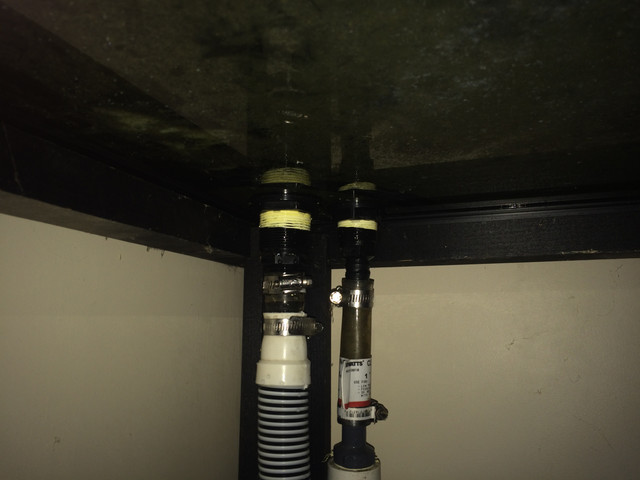Hi,
I did not built this tank but got it with a sump connection already there. It's been working fine but I had to break it down and move it, and in the process one of the tubes (the one on the left) was knocked around, and when I checked, it's no longer watertight.

Can I seal it from the bottom? I can let it dry out but accessing it from the top, let alone all the cleaning I'd have to do, would be a nightmare. Failing that, would it be feasible to not clean the upper area and just put an enormous amount of sealant on top? The current overflow design only uses the top third.
I did not built this tank but got it with a sump connection already there. It's been working fine but I had to break it down and move it, and in the process one of the tubes (the one on the left) was knocked around, and when I checked, it's no longer watertight.

Can I seal it from the bottom? I can let it dry out but accessing it from the top, let alone all the cleaning I'd have to do, would be a nightmare. Failing that, would it be feasible to not clean the upper area and just put an enormous amount of sealant on top? The current overflow design only uses the top third.















